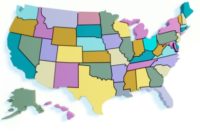The top online retailer in the world is also tops at being an unsafe employer, according to the “Dirty Dozen” list released yesterday by the National Council for Occupational Safety and Health (National COSH). The annual compilation – which is timed to coincide with Workers’ Memorial Week, is based on severity of injuries to workers; exposure to unnecessary and preventable risk; repeat citations by relevant state and federal authorities; and activity by workers to improve their health and safety conditions.
In alphabetical order, the “Dirty Dozen” are:
AMAZON Seattle, Washington
● Seven workers killed at Amazon warehouses since 2013 – including three workers within five weeks at three separate locations in 2017.
● Despite a pattern of preventable deaths, Amazon is requesting billions in tax breaks for a new headquarters, on top of $1 billion already received from state, local taxpayers.
CASE FARMS Troutman, North Carolina
● 74 OSHA violations per 1,000 employees – more than four times higher than any other poultry firm.
● A pattern of hiring undocumented workers, then firing them when they are injured or stand up for better working conditions.
DINE BRANDS GLOBAL, INC. (IHOP AND APPLEBEE’S) Glendale, California
● Demands for sex, groping, threats of violence against workers.
● More than 60 complaints about sexual and harassment and abuse.
● Eight lawsuits against IHOP and Applebee’s, both owned by Dine Brands Global.
K EXCAVATING Mason, Ohio
● 25-year old Zachary Hess buried alive in December 2017.
● OSHA cited JK Excavating, a repeat offender, three times in 2014 for failure to protect workers from trench collapse.
LOWE’S HOME IMPROVEMENT Mooresville, North Carolina
● 56 U.S. deaths linked to exposure to paint strippers containing methylene chloride, including 17 workers who died while refinishing bathtubs.
● The retail giant still sells products with this deadly substance, despite appeals from workers, consumers and families.
LYNNWAY AUTO AUCTION Billerica, Massachusetts
● Five dead in preventable auto crash – including a 37-year old mom working her first day on the job.
● Lynnway cited by OSHA and warned of vehicle safety hazards in 2014.
NEW YORK AND ATLANTIC RAILWAY New York, New York
● Workers suffer amputation, brain injury, and impaired vision. ● Immigrants workers face workplace discrimination; assigned to hazardous tasks without proper training and equipment.
PATTERSON UTI ENERGY Houston, Texas
● Five workers dead in an explosion in Quinton, Oklahoma.
● 110 OSHA violations and 13 workers dead in the past decade.
● U.S. Senate: Patterson "one of the worst violators of workplace safety laws.”
SARBANAND FARMS Sumas, Washington
● Farm worker dies after complaining of headaches.
● 70 co-workers go on strike to protest unsafe conditions.
● Strikers are fired from their jobs and evicted from company housing.
TESLA MOTORS Fremont, California
● Recordable injuries 31% higher than industry average; serious injuries 83% higher.
● The company claims a recent improvement in injury rates – but an independent investigation shows Tesla has “failed to report some of its serious injuries …making the company’s injury numbers look better than they actually are.”
VERLA INTERNATIONAL New Windsor, New York
● Explosion kills a worker at cosmetics plan.
● 125 workers injured, eight firefighters hospitalized.
● Company previously cited for poor handling of chemicals that led to deadly blaze; safety consultant says disaster was “easily preventable.”
WASTE MANAGEMENT Houston, Texas
•23-Year old worker killed at a recycling facility.
•Company failed to lockout/tagout machinery during repairs.
•Waste Management, the nation’s largest waste disposal company, has been cited more than 60 times by OSHA, resulting in nearly $1 million in fines.
The numbers
National COSH pointed out that the 5,190 workplace deaths from acute trauma in 2016 comprise the highest total recorded since 2008. It is a seven percent increase from 2015 and a 12 percent increase over a five-year period dating back to 2012.
“If you look behind the numbers, the story is equally somber,” said Marcy Goldstein-Gelb, Co-Executive Director of the organization. “Most of these stories could have been prevented with well-known safety measures.”
Traumatic deaths are only one data point: an estimated 95,000 workers die annually in the U.S. from cancers, respiratory and circulatory diseases and other illnesses associated with long-term exposure in the workplace.
From 2012 to 2017, OSHA’s budget decreased by $12 million and the number of full-time OSHA staff was cut from 2,305 to 2,173, a reduction of 5.7 per cent.
Government regulations and the cost to business
National COSH takes issue with claims that complying with government regulations is costly to businesses, citing peer-reviewed research by David I. Levine, professor of economics at the University of California, Berkeley, and Michael W. Toffel, professor at the Harvard Business School, that matched safety performance, workers compensation claims, and medical expenses at two sets of over 400 California firms. One set of firms had been visited for random safety inspections by Cal/OSHA, the state safety agency. The other firms had not been inspected. The findings: Cal/OSHA’s randomized inspections reduced the number of injuries leading to workers’ compensation claims by around 9% and lowered the medical expenses and wage replacement paid from those claims by 26%. On average, inspections lowered employers’ medical costs and lost earnings due to workplace injuries by about $350,000 over the next few years.
Deep cuts to OSHA, and the National Institute for Occupational Safety and Health and the complete elimination of the U.S. Chemical Safety Board (CSB) and the Susan Harwood Training Grants Program were proposed in FY 2017 and FY 2018. Pushback by National and local COSH groups, unions and other safety advocates resulted in the avoidance of those funding cuts.
The story behind a statistic
Federal agencies aren’t the only avenue for improving worker safety. The death of Drew Wynne in 2017 has turned his brother Brian into an activist. Drew died of exposure to methylene chloride while stripping the paint from the floor his a business he’d built from the ground up. Brian recalled the last time he saw his brother, which was at a family dinner a short time before Drew’s death. “He was smiling, and he was very happy with where his life was heading,” Brian recalled.
As noted above, Lowes is still selling the product that killed Drew Wynne. So are many other hardware stores. Brian Wynne has joined forces with other victims’ families, legislators and safety advocates to demand immediate action from the EPA in the form of a ban on products containing methylene chloride. He has also launched a Change.org petition calling on Lowes to immediately remove all methylene chloride products from their shelves.
“We’ll continue to fight,” he vowed. “We’ll continue to share Drew’s story.”



